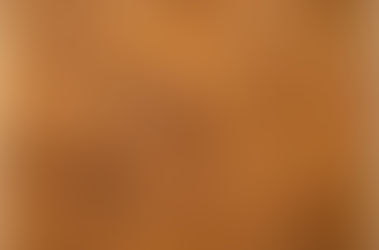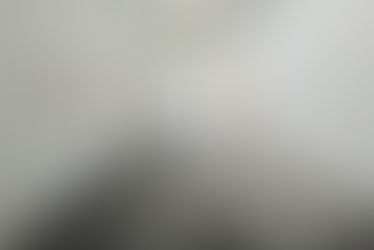‘History’, ‘Unscripted’ Historical Traces and the Fiction of Ownership in the work of Sven Augustijn
- The Courtauldian
- Apr 16, 2018
- 7 min read
The starting-point of critical elaboration is the consciousness of what one really is, and is ‘knowing thyself’ as a product of the historical processes to date, which has deposited in you an infinity of traces, without leaving an inventory.
Antonio Gramsci, Prison Notebooks, 1929
There is no document of civilization which is not at the same time a document of barbarism.
Walter Benjamin, Theses on the Philosophy of History VII, 1940

Sven Augustijnen, Spectres (stills), 2011. Courtesy: Jan Mot, Brussels.
‘Own it!’ is a common American colloquialism, the kind of thing a Real Housewife™ would demand of her castmate who has failed to accept responsibility for something unsavoury she has supposedly said or done. Ownership is an apt, if subliminally materialist and decadent (indeed, American) metaphor for holding oneself accountable in the face of one’s prior indiscretions, especially for someone with the politics of one of the Real Housewives of Beverly Hills, for instance, whose idea of feminism is generally of the hyper-capitalist, property-accumulating ilk.
How do we remain diligent heirs of the past and what is it, exactly, that we inherit? History and cultural heritage are so often mired in these notions of property and ownership. The famous Churchillian claim that history is written by the victors points to the power dynamics usually undergirding historical narratives, documented to serve a particular nation or maintain a hegemonic elite. Take, for example, the historical accounts of the Spanish Conquest of the Americas, which are characterized by a certain inevitability. The Amerindians were ‘doomed to fail’. This unscripted scriptedness pervades centuries of Western histories. Surely, still, these narratives are mutable and being revised all the time. How, then, might we think beyond history and cultural heritage as something finite that is owned, but rather as an ephemeral reminder, a question to which we must return again and again?

Jan Mot presents ‘Summer Thoughts’ (2014- ) by Sven Augustijnen at Hollybush Gardens, London.Photo: Lukas Hall, January 2018.
One could plausibly summon the aforementioned words of Antonio Gramsci in considering the impetus behind recent historically interventionist work by the Belgian artist Sven Augustijnen (b. 1970), which continually unsettles our notions of historiography and the construction of collective realities, of national record. Through his pseudo-documentary films like Spectres (2011) and installations like the developing ‘Summer Thoughts’ (2014- ) exhibition, most recently shown in London in January and February of this year, Augustijnen has taken it upon himself to try to reconcile certain colonial histories at the interstices of national and personal memory, fact and fiction.
It is into the ‘infinity of traces’ that Augustijnen delves in order to reveal cross-currents of evidence and constellations of meaning. Picture a gray-haired Belgian academic retracing his steps through dense foliage in the southern Congo. It’s nighttime and he navigates the space lit by his car’s headlights. The site is that of the brutal assassination of the independent Democratic of the Congo’s first elected prime minister Patrice Lumumba fifty years prior. Spectres follows the former Belgian diplomat Jacques Brassinne de La Buissière’s return to the Katanga province in hopes of self-vindication in light of the fiftieth anniversary of the event, which today is conventionally understood to have been a secret collusion between Belgian and US governments and the United Nations. Brassinne has devoted the last fifty years (and a doctoral dissertation) to disproving Belgian involvement in the murder. Void of any narration (but set to excerpts from Bach’s St. John Passion) the film offers first-hand testimonies and dialogues between former Belgian officials imbricated in the 1961 scandal and surviving members of Lumumba’s family, including his widowed wife Pauline and their adult children. It becomes clear that the elite Belgians have convinced themselves of a version of the story that is much different from everyone else’s idea of what happened.
Augustijnen reminds us that 'historiography is by no means a natural phenomenon’. This exploration of ‘the way we use stories, images and fiction to construct reality and history’ is an ongoing theme throughout his work, and a recurring question of artist-documentarians since the 1980s. The Vietnamese writer and filmmaker Trinh T. Minh-ha has attempted to critically work through this fraught exercise of the filmed interview, the testimony, which is supposed to be unscripted and ‘authentic’, but which is inevitably coloured by the story that the interviewee wants to be told. ‘Summer Thoughts’ is also concerned with the interviewed steward of history, as well as with national opinions and conflicting historical memories. One wonders how it might have been received differently having been displayed in Brussels, the Hague, Trondheim, at the National Museum of Kosovo and at the tenth Taipei Biennale, before coming to London.
At the core of ‘Summer Thoughts’ is a one-sided epistolary journey through space and time initiated through his correspondence with the curator (and now the Dean of Yale School of Art) Marta Kuzma in response to her curatorial endeavour dOCUMENTA (13). Augustijnen’s letters (Kuzma’s are curiously absent), blown up to nearly six feet in height, adorn two and a half walls of the main gallery space like tapestries. This mode of display isn’t incidental, as his writings begin with reflections on the woven tapestries of the Scandinavian artist Hannah Ryggen (1894-1970), which were selected by Kuzma for dOCUMENTA. In the first letter Augustijnen is thinking about Ryggen’s Etiopia (1935)—featuring an image of Mussolini with a knife through his head—which had been displayed previously (although partially concealed) alongside Picasso’s Guernica at the 1937 Paris Expo, and again ‘on a clothes line outside her house in Oslo in full sight of Nazi soldiers’.
This leads him to ponder the possibility that one of those Nazi soldiers may have been the infamous, decorated Nazi collaborator cum founder of the Belgian Catholic (neo-Nazi) Rexist party Léon Degrelle, who had fled to Oslo after being sentenced to death in absentia in Brussels in 1944. From Degrelle and Ryggen in Oslo, the connections proliferate throughout western Europe. Letter after letter offers the casual conversation and quotidian delights of a correspondence between friends, mixed with Augustijnen’s observations and sustained curiosity about post-war Europe and its inextricably interrelated far-right political movements. The artist is presented as scholarly researcher, as detective, as purveyor of a documentary tradition. Near the centre of the room is a table covered in issues of The New York Times and the International Edition from the Summer of 2014, with front page headlines echoing his cathexis on right-wing resurgences and outbursts of violence. One gets a sense of traces being collected and thoughtfully considered, of evidence being compiled in anticipation of a trial.

Jan Mot presents ‘Summer Thoughts’ (2014- ) by Sven Augustijnen at Hollybush Gardens, London.
Excerpts from La Clave: Caza de Nazi (1983), video projection (still). Photo: Lukas Hall, January 2018.
The spectre of Degrelle materializes in a small room adjacent to the main gallery. In a video projected against a blank wall, we see a panel of seven ‘experts’ in post-war European politics and international law assembled in a semicircle of sleek modernist chairs before a screen on a soundstage. The so-called experts represent a sample that could be called contentious but by no means diverse. They are all European men over the age of thirty-five, right-wing, left-wing, and moderate. Some are smoking cigarettes, one, a pipe. It’s 1983. We’ve stumbled upon an episode of the Spanish political talk show La Clave, hosted by José Luís Balbín, seated at centre. Today’s topic: ‘Caza de Nazis’ (‘Nazi Hunting’). Balbín introduces his panel of talking heads, among them Degrelle and the Frenchman Michel Cojot-Goldberg, Holocaust survivor and former Nazi Hunter himself, who at one time stalked the Nazi war criminal Klaus Barbie all the way to Bolivia before ultimately deciding not to kill him.
Questions are alternately posed by Balbín and by another man who appears intermittently on the screen behind the panel from a separate room, reading questions phoned in from the home audience. Of concern is this question of the Nazi Hunt, of extradition laws and the statute of limitations for crimes against humanity under international criminal code, although the ensuing discussion devolves into a debate over semantics, culpability, and historical veracity. The right-wing extremists are of course opposed to the language of ‘the hunt’, and to any sustained pursuit of former Nazis who have found refuge in Spain or in various parts of Latin America, beyond the purview of extradition laws. The more liberal Frenchman and the Soviet, on the other hand, are in favour of ‘the hunt’ as a metaphor for the killing of a creature without granting it the right to a trial, as was the case of the six million Jews systematically slaughtered in the Holocaust. Degrelle, who, in his introduction exclaims ‘I love to fight!’, is at his most animated while bemoaning the ‘flagrant lies’ perpetuated by the Holocaust films of the fifties, sixties, and seventies. An argument breaks out regarding who suffered the most during the war: was it the Jews in Germany or the Jews in Spain? What about the Jews in Italy? What about the Polish people? Forty years after the fact, the panel of experts still can’t come to a consensus on a single issue raised.
What could the Real Housewife of Beverly Hills, Jacques Brassine, and Léon Degrelle possibly have in common? Each one appears before the camera to plead their case, ‘unscripted’, constructing his or her own reality in order to set the record straight, or, indeed, to have the final say. Still, somehow, in each case, the viewer can suture together a constellation of meaning that renders the expert’s testimony obsolete. In both Spectres and the video component of ‘Summer Thoughts’, Augustijnen lets the historical players speak for themselves. What this exercise demonstrates for the viewer is the remarkably wide margin of interpretation upon which these so-called histories rely. To be clear, I am not saying that the assassination of Patrice Lumumba or the Holocaust are simply ‘open to interpretation’. Churchill’s assertion about history written by the victors takes on another layer of meaning. To it, I might add, that the history written by the victors is not ‘history’ at all, but a fictionalization that allows such ‘victors’ to selectively carry with them the stories that they choose. These stories have no bearing on the events of the past. There is no statute of limitations on the past, or on personal or heritable trauma. It doesn’t go away. It can be spun in any number of ways, but its traces will always remain.












Comments